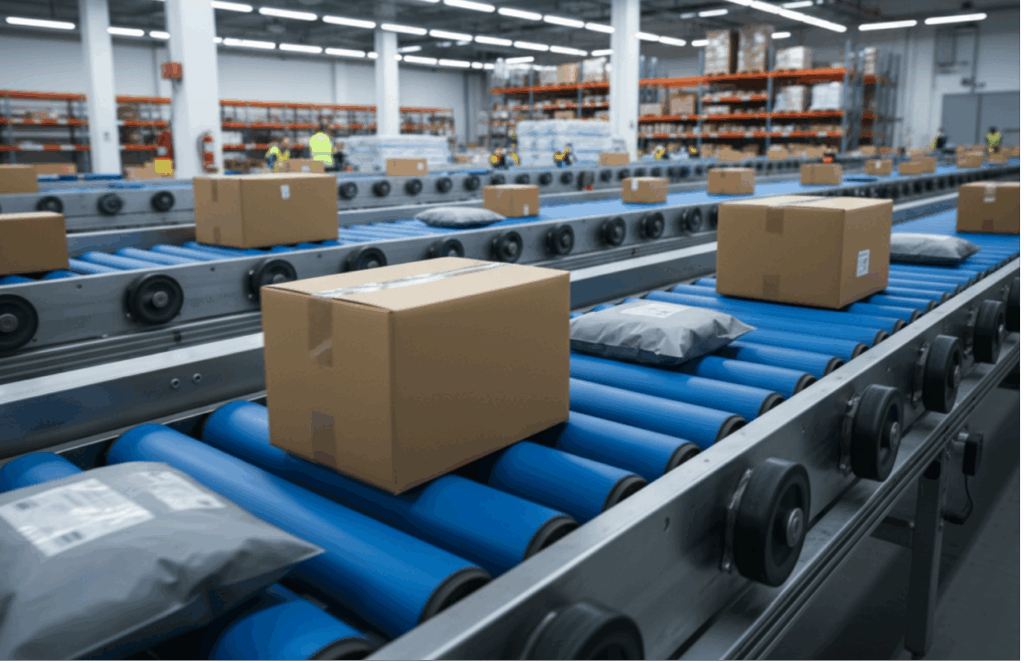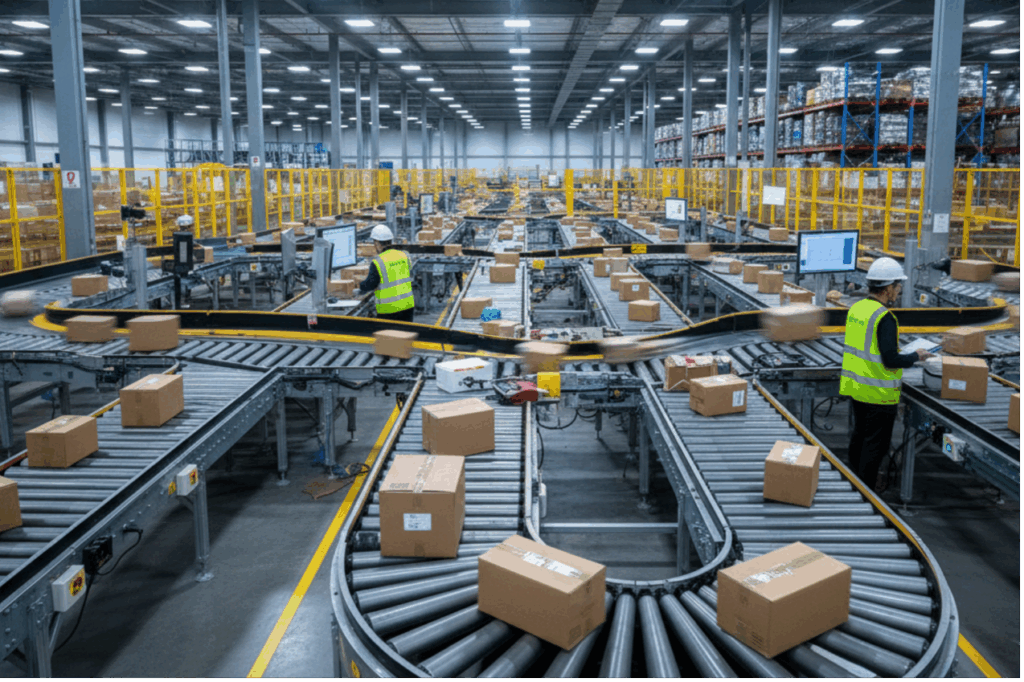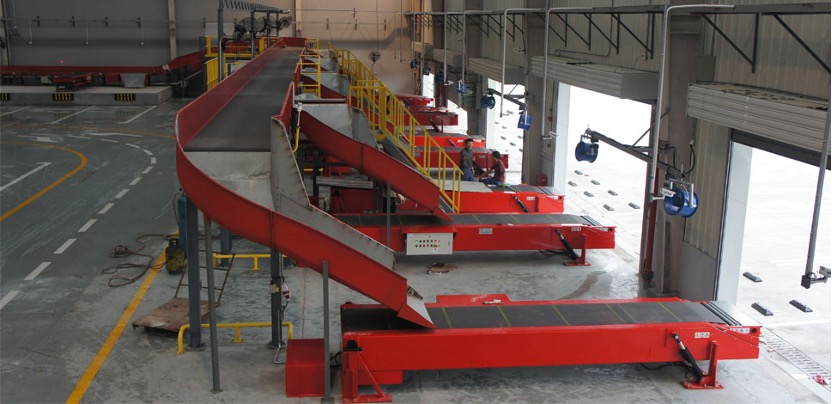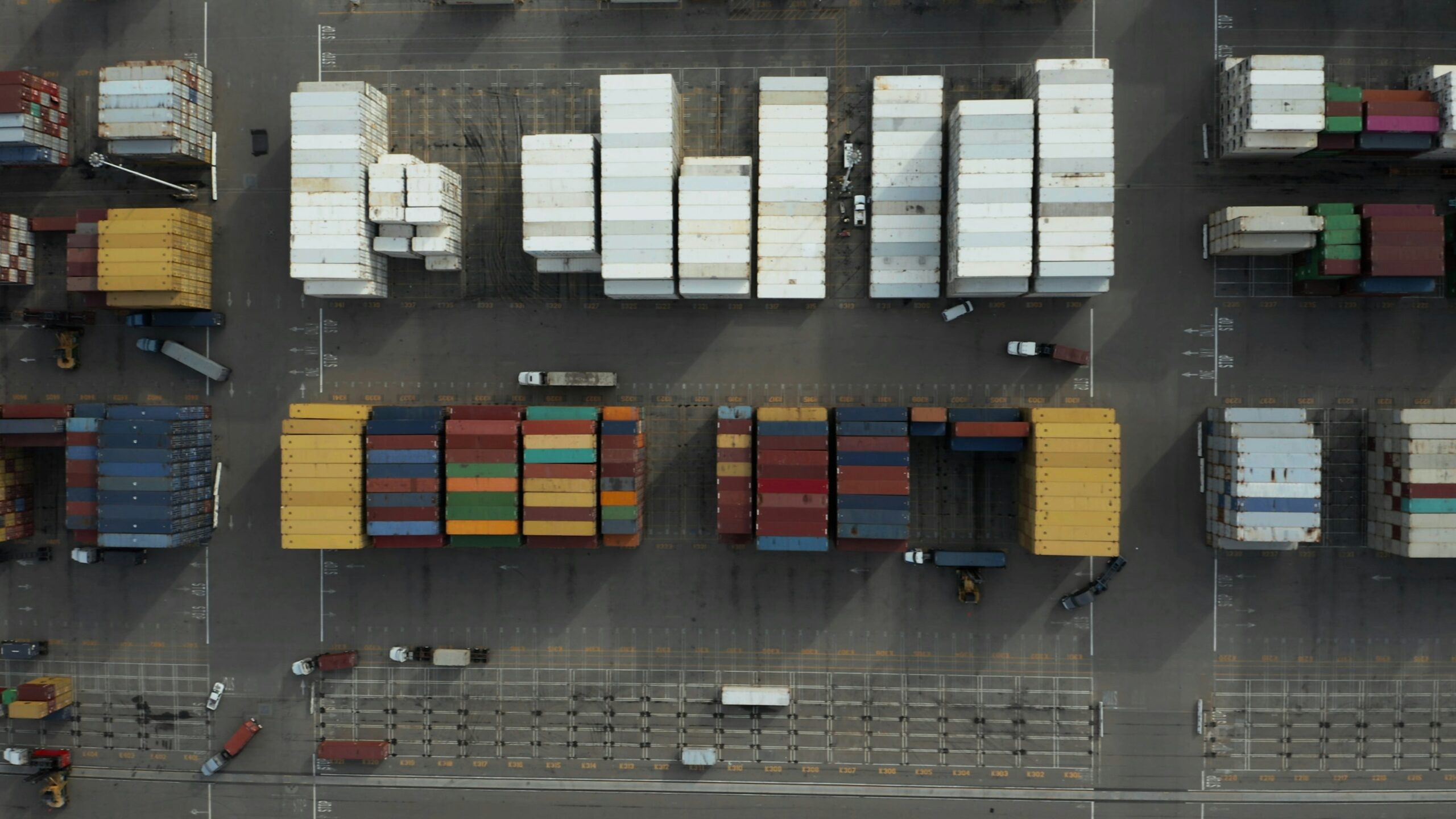Every logistics manager wants a faster operation. But in the reality of a busy sorting center, a machine’s theoretical speed is just a number on a spec sheet. It doesn’t account for demand spikes, “ugly” parcels, or labor shortages.
To survive in the modern e-commerce landscape, brands must stop optimizing for machine speed and start engineering for system throughput. Throughput measures the resilience of your entire warehouse operation, not just one component. By understanding the critical difference between these two metrics, you can avoid costly capital misallocation and build a logistics ecosystem that delivers consistent results, day in and day out.
What is “Speed”: An Engine’s Specification
In logistics automation, sorter speed is a component-level parameter. It is defined as the maximum number of parcels a single sorting device can mechanically process per unit of time, measured under ideal, controlled conditions. These conditions assume a homogenous stream of perfectly sized and shaped parcels with no interruptions.
This metric is a crucial part of an equipment’s technical specification, indicating its potential. For instance, lower-throughput systems like sweep arm sorters may be rated for 6,000 PPH, while high-speed sortation systems like advanced cross-belt sorters can claim theoretical speeds of 27,000 PPH or more. However, it is essential to recognize this metric as a statement of maximum theoretical capability, analogous to a car engine’s maximum RPM. It describes the potential of the engine, not the efficiency of the actual journey.
What is “Throughput”: The Journey’s Outcome
In stark contrast, warehouse throughput is a system-level performance metric that measures the total volume of goods successfully processed through an entire facility—from inbound receiving to outbound shipping—within a specific period. Unlike speed, which focuses on a single task, throughput provides a comprehensive measure of the entire operational workflow, encompassing interdependent stages like:
- Receiving and Unloading
- Induction and Scanning
- Sorting
- Exception and Abnormal Parcel Handling
- Packing and Consolidation
- Loading and Dispatch
Throughput is the truest measure of a facility’s production performance because it reflects the integrated result of all these activities, accounting for real-world constraints and bottlenecks. High system throughput directly impacts order fulfillment timelines, reduces operational costs, and drives customer satisfaction, making it the key indicator of overall warehouse efficiency.
Engineering for Throughput: The Siwun Integrated Systems Approach
To improve warehouse efficiency, the objective must shift from optimizing parts in a silo to engineering a seamless, systemic flow across the entire value chain. This is the core philosophy behind the Siwun integrated systems approach, which designs and implements holistic, collaborative ecosystems to ensure the “unloading-sorting-loading” sequence operates without friction.
This is achieved through the strategic integration of specialized technologies that work in synergy to maximize end-to-end warehouse throughput.
1. High-Speed, High-Flexibility Sorting (Siwun Cross-Belt Sorters)
At the heart of the system, Siwun’s Cross-Belt Sorters are engineered for both speed and flexibility. Their design allows for the gentle and precise handling of a vast and unpredictable mix of items, including standard cartons, polybags, and critically, the “ugly parcels” that jam less adaptable systems. By reliably processing this diverse stream with 99.99% accuracy, the cross-belt sorter prevents the costly stoppages that cripple overall throughput.
2. Bridging Critical Gaps (Siwun Telescopic Conveyors)
The loading and unloading dock is a notorious bottleneck that can starve even the most advanced high-speed sortation systems. Siwun’s Telescopic Conveyors eliminate this chokepoint by extending directly into a truck or trailer, creating a seamless bridge for the flow of goods. By automating this process, they can increase productivity at the dock by up to 30%, reduce labor requirements by over 50%, and ensure the sorting system is never starved for parcels.
3. Precision Diversion for Complex Needs (Siwun Wheel Sorters)
Within a large-scale operation, parcels often need to be diverted to specialized stations. Siwun’s Wheel Sorters provide a modular and cost-effective solution for these complex needs. These systems use rows of steerable wheels to gently guide parcels off a main conveyor onto a spur, enabling multi-category sorting for items like apparel or electronics. By efficiently managing these secondary flows, wheel sorters prevent congestion and allow the primary sorter to maintain maximum velocity.
The System Advantage
The true advantage emerges from the intelligent integration of these technologies. The telescopic conveyor provides a steady infeed, the cross-belt sorter reliably handles diverse parcels at high speed, and the wheel sorters manage specialized flows without disruption. This synergy eliminates the cascading bottlenecks that plague siloed systems, ensuring stable, predictable, and high warehouse throughput, even during the most demanding peak promotional periods.
Conclusion
The pursuit of genuine warehouse efficiency requires a fundamental paradigm shift from the narrow metric of sorter speed to the holistic, system-level measure of end-to-end throughput. This is the only metric that accurately reflects a facility’s true capacity under the strain of real-world operational complexities.
Ultimately, consumers are indifferent to a sorter’s PPH rating; their experience is defined by the outcome of the entire process—timely delivery and order accuracy. Focusing on the speed of an isolated sorter is like focusing on a single sprinter’s time in a complex relay race; the race is won or lost in the handoffs and the collective performance of the team. An investment in an integrated, throughput-focused system from Siwun is an investment in winning that race and, most importantly, an investment in the customer promise.








